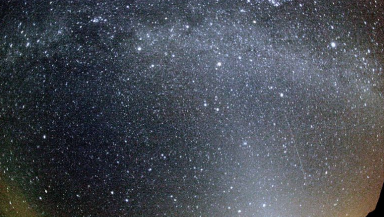
Halley's Comet won't be circling back to Earth's view until 2062 but bits and pieces of it will be visible in the form of a meteor shower from October to November 2015. As posted on NASA, the Orionid meteor shower will reach its peak this Oct. 21 to 22, with an estimated 20 meteors visible per hour.
As reported by the Chronicle Live, the meteors are a part of debris from Halley's Comet and are visible every year. It is the second meteor shower that comes from Halley's Comet debris as the other is the Eta Aquarids meteor shower which is visible in May.
The meteor shower gets its name from the fact that the meteor shower appear to come from the Orion the Hunter constellation, particularly north of the bright star Betelgeuse. Each meteor travels at an average of 41 miles per second, traveling so fast that they often leave a blazing trail in the sky.
Fortunately, this also makes them very easy to spot in the evening sky. The Orionid meteor shower can be seen around the globe, although it is advised to be away from the cities since the city lights can make the meteor shower harder to see.
NASA posts that the best time to view the Orionid shower from midnight to early dawn. The peak will also be around the same time the moon wanes into a new moon, making the night sky even clearer. It is speculated that because of the moonless night, even more meteors will be visible.
For those who will not be able to go out before the dawn of Oct. 21 and 22 there is the option to view the meteor shower online via Slooh. Slooh was also responsible for live streaming the previous Eta Aquarids meteor shower this past May. NASA will also present Slooh's live stream in order to show the meteor shower to a wider audience.













